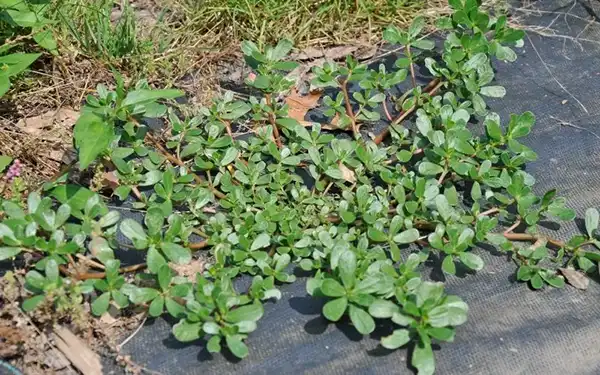Purslane (Verdolaga) has transformed from a nuisance in gardens to a treasured treasure! This amazing plant is reclaiming its place at farmers markets and top restaurants, offering not only health benefits but culinary satisfaction as well.
Called by different names, such as hogweed and pigweed, purslane is a weed that should be welcomed. Recognized as a superfood, it holds a special place in the affections of the likes of Mahatma Gandhi and is currently experiencing a revival.
This hardy plant emerges from cracks in sidewalks, infiltrates gardens, and has been called a “miracle plant” by Dr. Artemis Simopoulos, president of the Center for Genetics, Nutrition, and Health. During her tenure at the National Institutes of Health, Dr. Simopoulos found that purslane contains the highest levels of Omega-3 fatty acids of all green plants.
Its succulent, drop-shaped leaves are rich in antioxidants, vitamins and minerals, making it a powerhouse of nutritional energy. But that’s not all: These leaves also offer a rejuvenating, zesty lemon flavor, with a touch of pepper, as pointed out by Sergio Vitale, the chef-owner of Aldo’s Ristorante Italiano in Chicago, who grew up savoring purslane in southern Italy.
Although early Americans, including Martha Washington, enjoyed purslane both fresh and pickled, its use declined in the early 1900s. Fortunately, in recent times, innovative farmers, foragers, and chefs have reignited interest in this purslane. advantageous grass.
When preparing wild purslane, it is essential to wash the plant thoroughly to remove any pesticide residues. With its tart and slightly salty flavor, purslane is a great addition to salads and various dishes.
Also, here’s a simple recipe to try: Purslane and Basil Pesto.
Ingredients:
- 2 cups young purslane leaves and stems, rinsed and roughly chopped
- 45 g basil leaves, rinsed
- 1 clove of garlic
- 45 g of toasted almonds
- Juice of half a lemon
- 50 ml of olive oil
- Salt and pepper to taste
Instructions:
- Combine purslane, basil, garlic, almonds, and lemon juice in a food processor.
- Knead until the mixture is well combined.
- While the processor is running, slowly add the olive oil until the mixture emulsifies.
- Salt and pepper to your taste.
- This flavorful pesto can be enjoyed on toasted sandwiches, roasted vegetables, meat or with pasta.
Let’s now delve deeper into the nutritional benefits of purslane:
- Omega-3 fatty acids: Purslane stands out as an exceptional plant-based source of these essential fatty acids, which are critical for brain and heart health, especially for vegans.
- Antioxidants: Rich in antioxidants like glutathione, purslane helps protect cells, fight damage and slow the aging process.
- Vitamin C: A significant supply of this immune vitamin, which contributes to a strong and resistant immune system.
- Beta-carotene: Abundant in Purslane, beta-carotene acts as a precursor of vitamin A, solving common deficiencies.
- Melatonin: Unlike most plants, purslane contains melatonin, a hormone essential for regulating sleep, making it a valuable natural source.
- Cholesterol reduction: Thanks to betalain, an antioxidant present in purslane, it helps prevent cholesterol damage to blood vessels and positively affects LDL cholesterol levels.
- Tryptophan: Purslane contains tryptophan, a key amino acid that helps regulate mood and fights depression.
Embrace the wonders of purslane and savor its medicinal and culinary benefits. From its richness in Omega-3 to its melatonin content, this versatile plant has much to offer to your well-being and taste experiences.
